Securing and Supporting Cables and Raceways Part One | JADE Learning
By: tpull | May 20, 2016
The 2014 NEC is clear about how cables and raceways must be supported. The general rule in 300.11(A) is that raceways, cable assemblies, boxes, cabinets and fittings shall be securely fastened in place.
Cables cannot be used as a means of support for other cables, raceways, or nonelectrical equipment, per 300.11(C).
Cables cannot be supported by raceways, unless the raceway contains the power supply conductors to electrical equipment, and the cable has Class 2 conductors in the cable that connect to the same equipment. See 300.11(B)(2).
The photo below shows thermostat wire supported by raceway connected to the HVAC equipment.
Thermostat wire supported by raceway connected to HVAC equipment.
Raceway is not allowed to support another raceway.
Raceways cannot be used as a means of support for other raceways unless the raceway is identified as a means of support. “Identified” means it is suitable for a specific purpose, in this case, to support other raceways. Common raceways, like RMC, EMT, and PVC are not identified as a means of support for other raceways. See 300.11(B)(1).
Other support methods, such as cable tray, may be identified as a way to support raceways.
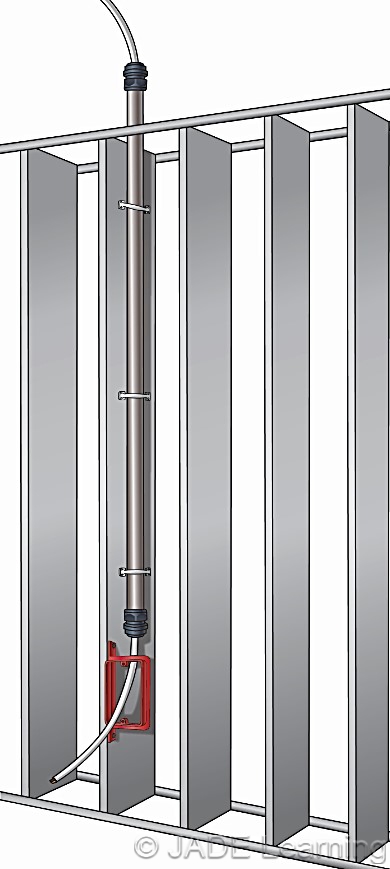
Raceways can be used to support boxes or conduit bodies and luminaires under certain conditions, per 300.11(B)(3). Section 314.23(E) permits enclosures that do not contain devices, luminaires or lampholders to be supported by raceways if the raceway is supported within 3 ft. of the enclosure, the enclosure is not more than 100 in.3 and two or more conduits are threaded wrenchtight into the enclosure.
Enclosures that do contain devices, luminaires or lampholders can be supported by raceways if the raceways are supported within 18 in. of the enclosure, the enclosure is not more than 100 in.3 and two or more conduits are threaded wrenchtight into the enclosure.
Section 300.12, Mechanical Continuity – Raceways and Cable, requires metallic and nonmetallic raceways to be continuous between cabinets, boxes, fittings, or other enclosures or outlets. There are two exceptions to this rule. Exception No. 1 permits short sections of raceways that are used to provide protection from physical damage to not be continuous.
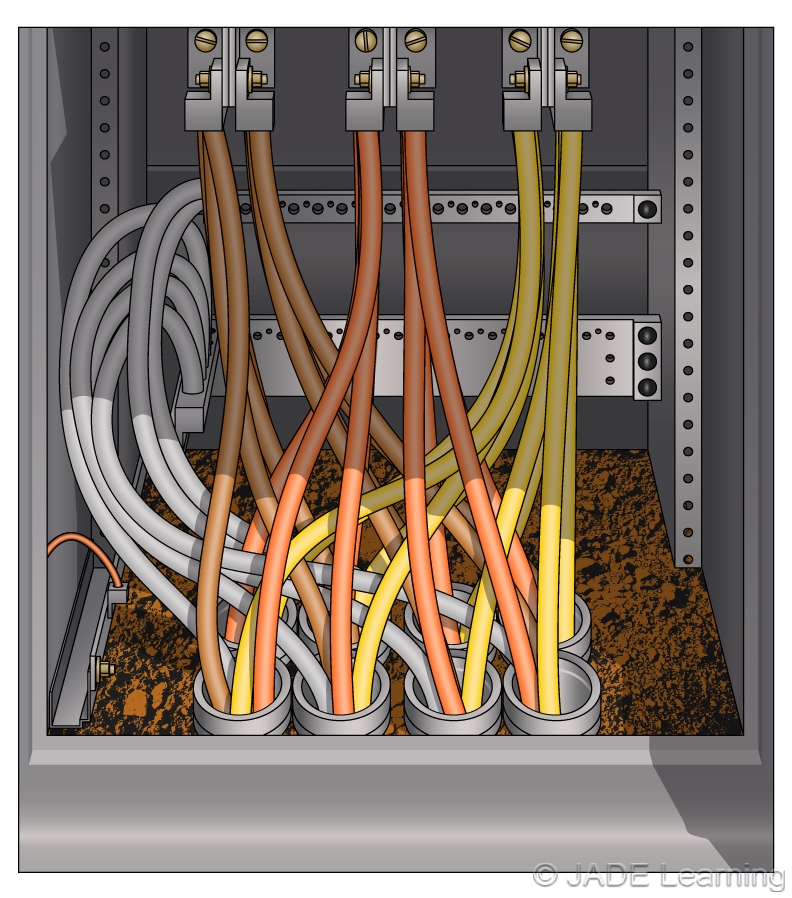
Exception No. 2 permits raceways and cables installed into the bottom of open bottom equipment, such as switchboards, to not be mechanically secured to the equipment.
Section 300.23 says that cables and raceways above ceiling panels must be arranged and secured so as to allow the removal of panels and access to the equipment. The photo below is a clear violation of this section. Telephone and computer equipment installers are the worst offenders of this requirement.
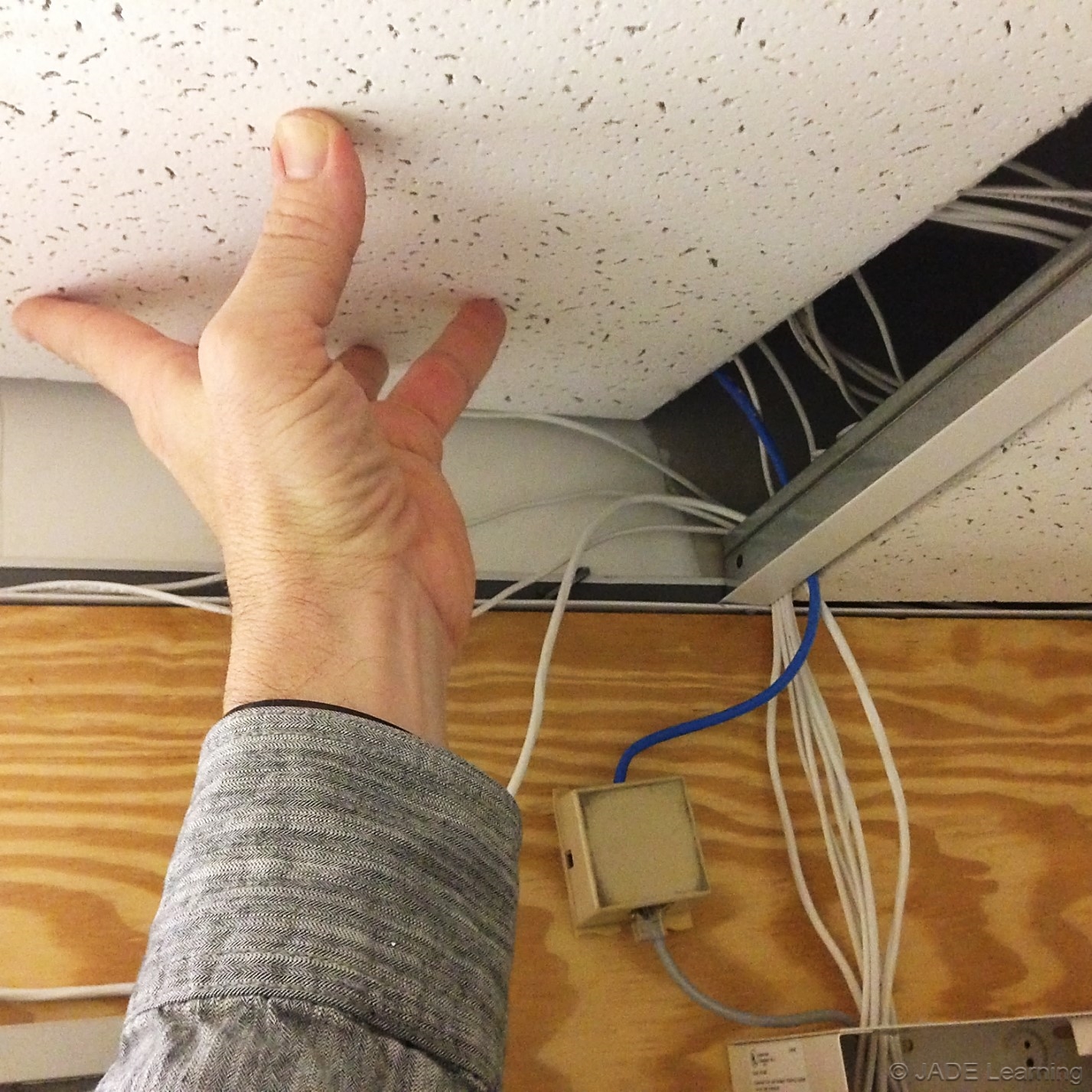
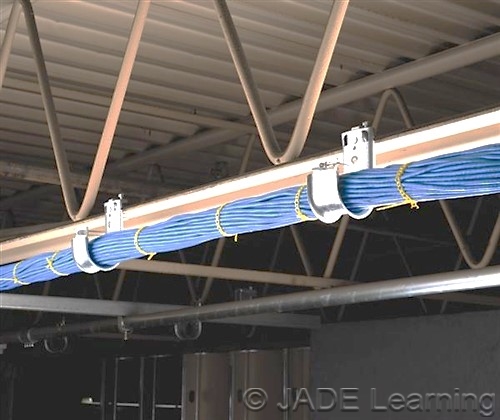
Section 725.24, Mechanical Execution of Work, requires Class 1, Class 2, and Class 3 circuits to be installed in a neat and workmanlike manner. That means cables must be supported by the building structure in such a manner that the cable will not be damaged by normal building use.
To learn more about securing and supporting cables, sign up for a continuing education course online at https://www.jadelearning.com/.
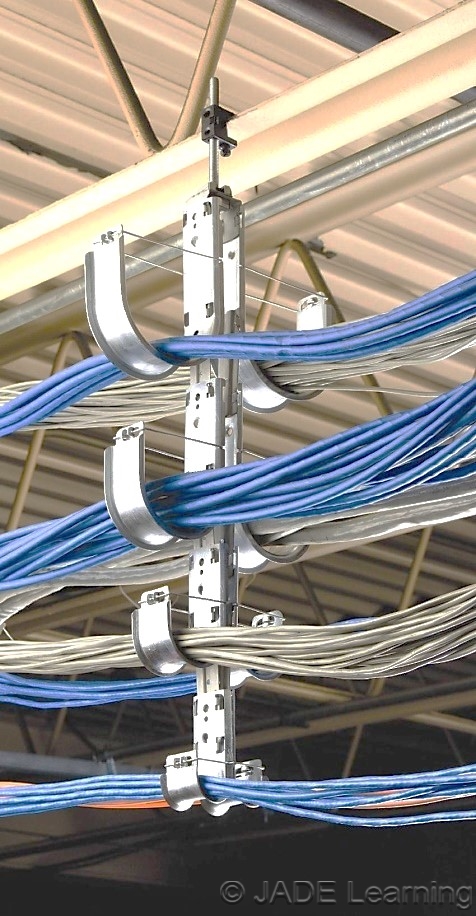

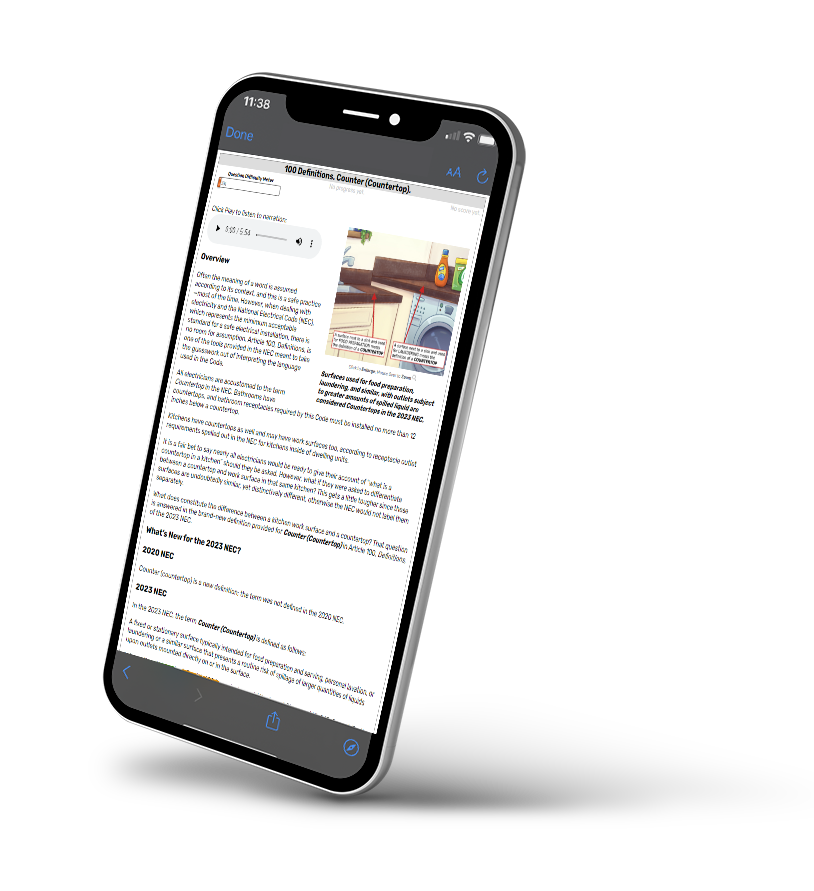
Inspector said to support conduit on top ground under my home. Artical in code reference. I’m a retired Electrican have not seen code a few years Thanks for your help no luck on web
It is important for everyone to take into account cable management, regardless of the size of the setup. During this procedure, you will create your electrical layout, gather the necessary supplies, and install your cables so they appear neat and safe.